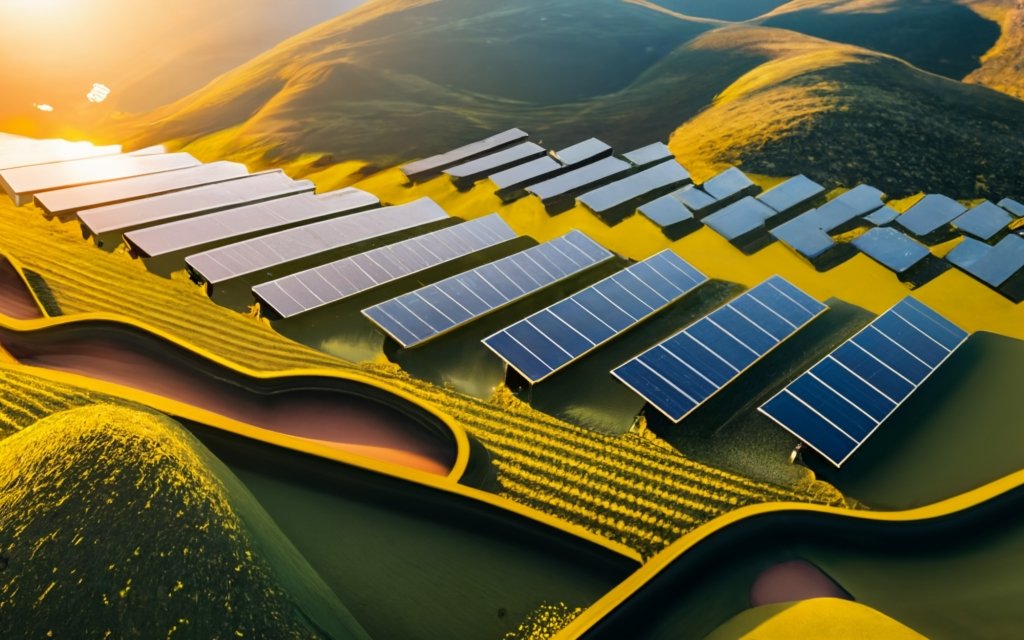Solar Panel Efficiency: A Path to Energy Independence

How Do Solar Panels Work?
Solar panels (also called photovoltaics or PV), work using the photovoltaic effect — the direct conversion of sunlight into electricity. The most critical parts of solar panels are their photovoltaic cells (PV cells), which are typically made of silicon.
When photons from the sunlight strike these solar cells, they excite the electrons within the photovoltaic system, generating an electric current. The solar panels then capture this current, and the inverter converts it into usable electricity.
Some solar panel systems also include energy storage, such as battery storage systems, that capture and store excess electricity when the sun is shining brightest. Then, after the sun sets or if it gets cloudy, it taps into these reserves so you don’t have to use grid-based electricity.
Keep in mind that not all sunlight is converted into electricity with the same efficiency. Solar panel efficiency is crucial in determining the overall performance of a solar panel system.
It’s important to note that various factors impact solar panel efficiency, such as the angle at which the panels are installed and the amount of shading they receive. The type of solar panel also impacts their efficiency. (More on this later.)
Why Does Solar Panel Efficiency Matter?
The efficiency of solar panels directly affects their ability to convert sunlight into electricity. A higher efficiency rating means the solar panels produce more electricity from the same amount of sunlight, increasing power output. This makes the solar panels more cost-effective and accelerates the return on investment (ROI).
Higher-efficiency solar panels also require less surface area to generate the same amount of electricity as lower-efficiency panels. This becomes increasingly important in installations with limited space, such as smaller homes with less roof space and urban settings.
Environmental impact is another consideration for solar panel efficiency. Using the most efficient solar panels can significantly reduce your carbon footprint over their lifespan when compared to lower-efficiency panels. By maximizing the amount of electricity generated from sunlight, high-efficiency panels help decrease the reliance on fossil fuels for energy production.
What Factors Affect Solar Panel Efficiency?
Many factors affect the efficiency of solar panels, from the panel type to its location and orientation (the direction it’s pointing). Here’s a closer look at these different elements contributing to a solar panel’s efficiency.
Solar Panel Type
There are several types of solar panels, and each has unique characteristics and output levels. Let’s check out these panel types, their benefits, and where they rank regarding efficiency.
Monocrystalline panels: These sleek panels are made from slices from a single (mono) crystal structure and offer the highest efficiency of all solar panel options. Known for their high power output, long lifespan, and small footprint, these panels are ideal for residential and commercial installations. The uniform look of monocrystalline panels also adds to the aesthetic appeal of a solar array, blending seamlessly into rooftops and landscapes. These panels generally have a 15-20% efficiency rating, but some experimental panels have reached as high as 50%.
Polycrystalline panels: Made from multiple (poly) crystal structures, these panels have a slightly lower efficiency of 13-16%. However, they are also generally a lower-cost option compared to monocrystalline panels, making them more budget-friendly for many consumers. They typically take up more space than monocrystalline panels, but their affordability offsets that downside for many consumers.
Thin-film solar panels: These panels are created by depositing a thin layer of semiconductor material on a substrate. Their key benefit is their lightweight and sometimes flexible nature, allowing for easy integration into various applications, including curved surfaces or portable solar chargers. While thin-film solar panels are less efficient than both types of crystalline panels at 7-18%, their versatility makes them ideal in some cases. They can offer a sleek profile that makes them useful in projects prioritizing aesthetics over efficiency.
Solar Panel Location
Solar panel location can also greatly influence their efficiency. Ideally, you want to install solar panels where they’re exposed to maximum sunlight throughout the day, ensuring consistent energy generation while the sun shines. This is why most homeowners and businesses install solar panels on rooftops, open fields, or solar farms.
When shopping for solar panels, you also must consider elevation and the surrounding landscape. You want unobstructed access to direct sunlight for maximum solar panel efficiency. As such, you’ll want to avoid trees, buildings, or other structures that cast shadows.
As for elevation, understand that higher elevations receive more sunlight than lower-lying areas. This is because of reduced atmospheric interference at higher altitudes, allowing for more direct sunlight to reach the solar panels. This is why mountainous regions or areas with elevated platforms can be excellent for installing solar panels.




KAYSWELL
I’ve really noticed that credit score improvement activity has to be conducted with tactics. If not, you will probably find yourself causing harm to your rank. In order to grow into success fixing your credit ranking you have to verify that from this instant you pay your entire monthly expenses promptly before their booked date. It really is significant simply because by not really accomplishing that, all other steps that you will decide to use to improve your credit position will not be effective. Thanks for sharing your strategies.